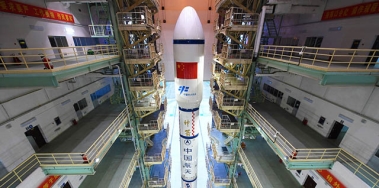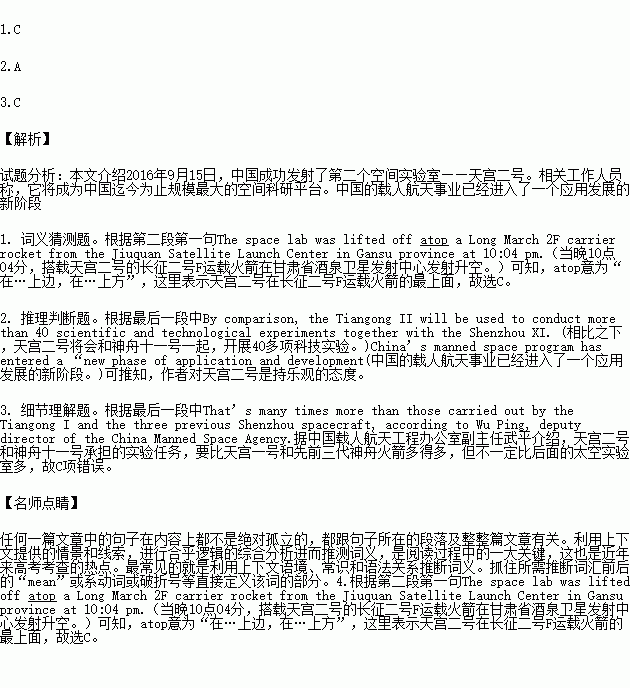题目内容

China launched its second space laboratory, the Tiangong II, on Sept 15, which space officials say will become the country’s largest scientific platform in space to date.
The space lab was lifted off atop a Long March 2F carrier rocket from the Jiuquan Satellite Launch Center in Gansu province at 10:04 pm. Around 20 minutes later, the mission was declared a success.
The Tiangong II did preparations in space for about one month and then the Shenzhou XI manned spacecraft rocketed two astronauts to the lab on October 17th. The pair will make it their home for 30 days before being returned to Earth.
The lab’s predecessor, Tiangong I, was launched in September 2011 and was used mainly to test technology involved in space docking.
By comparison, the Tiangong II will be used to conduct more than 40 scientific and technological experiments together with the Shenzhou XI. That’s many times more than those carried out by the Tiangong I and the three previous Shenzhou spacecraft, according to Wu Ping, deputy director of the China Manned Space Agency. China’s manned space program has entered a “new phase of application and development,” he said.
1.The underlined expression“atop” can be probably replaced with ________.
A. according toB. by means of
C. on top ofD. in front of
2.What is the author’s attitude towards the Tiangong II’s prospect?
A. optimistic.B. negative.C. objective.D. subjective.
3.Which of the following statement about the passage is NOT true?
A. At present, the Tiangong II is our country’s largest scientific platform in space.
B. Two astronauts will live and work in the Tiangong II till mid November.
C. The Tiangong II will carry out far more scientific and technological experiments than its latter space lab.
D. Before two astronauts arrived, the Tiangong II had done preparations in space for about one month.
 阅读快车系列答案
阅读快车系列答案
